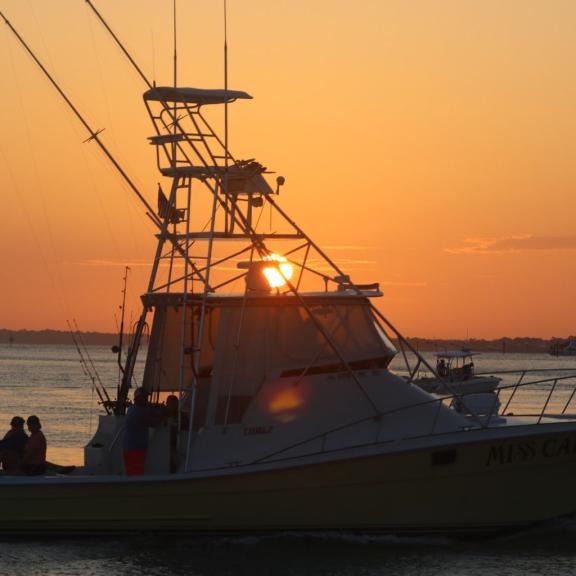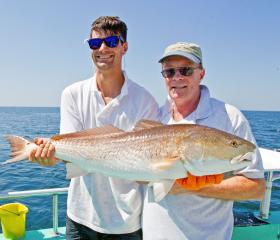
While Alabama winters bring in colder weather, it is still great for fishing.
The fishing action gets slower during the winter, but surf anglers will still catch whiting and a few pompanos throughout the cold winter season. On the nicer days, drive your boat out to the surf and start fishing regardless, as it’s far better than sitting at the house. Remember, the pompano fishing limit in Alabama is three fish with a minimum total length of 12 inches, but whites have no size or creel limit.

It takes a little colder weather for the sheepshead to show up most of the time, but anglers have been able to catch toothy fish in good numbers lately. Sheepshead shows up around the structure when the fish start spawning activity that will last through February. The fishing limits on sheepshead are 10 per person with a 12-inch fork length minimum.
Rock and concrete jetties and pilings are favorite hangouts for sheepshead, but they can also be found around the petroleum platforms just off the coastline, bridges, and oyster reefs. Sheepshead get their name because their front teeth look like the wooly, grass-eating animal. They use those chompers to chisel barnacles off structure and crack the shells of crabs and other crustaceans.
Live shrimp and fiddler crabs are the baits of choice for sheepshead. Usually, bait shops on the Alabama coast have that live bait in stock. However, call ahead to be sure they have shrimp and fiddlers in stock. If you can’t find live bait, fresh dead shrimp will work. If all else fails and you still want to avoid artificial bait, buy oysters and cut them into pieces to use for bait. Sheepshead is known for stealing your bait, so take plenty with you. If you cast into the structure and don’t get a bite within a couple of minutes, you might as well reel it in and add a new bait because you have been robbed.

Razor-sharp barnacles, a favorite food of sheepshead, are attached to all the structures where the fish live during the cooler weather. Be sure to carry plenty of sinkers, leaders, and hooks as you will lose some tackle. As with almost all fish species, the lighter your fishing line, the more likely you’ll get a bite. However, if the structure is thick, you may need to increase your line size to get the fish away from the structure. Start with a 10- or 12-pound line but move up to a 15-pound-test if you keep losing tackle.
You can use anything from No. 2 to 1/0 hooks, but always get a hook two times stronger or stronger because the sheepshead will bend a fine wire hook before you can set the hook. I use 7-foot rods with a fast tip with a good backbone. That way, I can detect the strike and then get the fish away from the structure.
If you have success reeling in sheepshead during your winter fishing trip, I recommend keeping those fish that are 16 inches or larger. When you start cleaning the fish, you’re going to find it will take a larger fish to yield the size fillets you want to serve for dinner. So reel in those smaller fish and then return them to the water to grow up to catch next year.
Ready to take your boat out and cast a line on the Alabama Gulf Coast? Start planning your next fishing trip to Gulf Shores and Orange Beach today!





